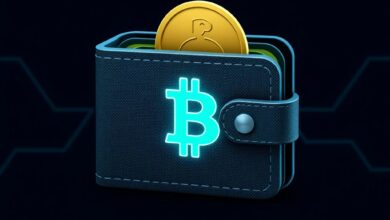Crypto staking – earn passive income easily

Investing in tokens and engaging with validators can significantly enhance your earnings. By participating in the proof-of-stake mechanism, you can earn a steady stream of rewards while contributing to network security. This approach not only yields returns but also supports the underlying infrastructure of blockchain networks.
To get started, select a reliable platform that facilitates token validation. Look for options that offer competitive reward rates and ensure the safety of your assets. It’s essential to research various projects and their staking mechanisms to identify those with promising growth potential.
Consider diversifying your holdings among multiple tokens to mitigate risks and maximize returns. Each validator may have different reward structures, so compare them thoroughly. By carefully selecting where you stake your tokens, you position yourself for sustainable financial growth in this innovative space.
What is Crypto Staking?
Validators play a crucial role in maintaining network security and integrity through the process of locking tokens to support blockchain operations. This mechanism, known as proof-of-stake, enables holders to contribute their assets toward validating transactions.
Here’s how it works:
- The validator is selected based on the number of tokens staked and other criteria.
- Once chosen, they validate transactions and add new blocks to the blockchain.
- In return for their services, validators earn rewards, typically in the form of additional tokens.
This system not only incentivizes validators but also enhances network efficiency. By participating in this way, token holders can generate a consistent stream of rewards over time without active trading or frequent interventions.
Key benefits include:
- Potentially higher returns compared to traditional savings methods.
- Contributing to the overall stability and security of the network.
- Diverse opportunities across different platforms and cryptocurrencies.
Engaging in this process requires careful selection of which tokens to stake and understanding each platform’s specific rules and reward structures. Always assess risks and potential returns before committing your assets.
How to Choose Coins?
Select tokens based on their network’s validator performance. Research the reliability and reputation of validators; those with higher uptime and a solid track record can significantly influence your returns.
Assess the reward structure for each asset. Different networks offer varying percentages, which can impact your overall yield. Look for projects that maintain sustainable rates rather than inflated short-term incentives.
Evaluate the underlying technology and use case of each token. Strong fundamentals often correlate with long-term stability, which is vital for consistent earnings over time.
Consider liquidity levels when choosing assets. Higher liquidity means easier access to funds when you need them, reducing potential losses during market fluctuations.
Review community engagement and support around the project. Active communities can drive innovation and adoption, enhancing the value of your holdings.
Lastly, stay updated on market trends and regulatory changes impacting specific tokens or networks. Being informed helps in making strategic decisions that maximize your profitability.
Setting Up a Wallet
Select a wallet that aligns with your security and accessibility preferences. Hardware wallets, like Ledger or Trezor, offer enhanced protection for your assets, while software wallets provide convenience for frequent transactions. Ensure the wallet supports the specific tokens you plan to use.
Once you’ve chosen a wallet, download it from the official website or purchase the hardware directly from authorized retailers. Follow the setup instructions carefully to create a new wallet. This process typically involves generating a seed phrase; store it securely offline, as it’s crucial for recovering your wallet.
After setting up, transfer funds into your wallet. Ensure you understand transaction fees and network conditions when moving assets between wallets or exchanges. Some platforms may require minimum balances to participate in validation processes.
Integrate your wallet with staking platforms by linking them securely. Always double-check addresses before sending tokens, as transactions are irreversible. Once connected, select validators based on their performance metrics and fees to maximize potential rewards.
Periodically monitor your staking activities through the wallet interface or dedicated dashboards offered by staking services. Stay informed about updates related to validators and network changes that might affect your earnings.
Maximizing Your Returns
To enhance your earnings, focus on selecting high-performance validators. Research their uptime and reliability metrics; a validator with consistent performance can significantly impact your reward accumulation.
Evaluate the tokenomics of the assets you choose. Coins with lower inflation rates typically offer better long-term rewards as they retain value more effectively compared to those with excessive token issuance.
Diversifying across various assets is key. By spreading investments among different tokens, you mitigate risks associated with a single asset’s poor performance while capitalizing on multiple reward sources.
Monitor network conditions closely. Participate in projects that are experiencing growth or have upcoming upgrades, as these often lead to increased demand for tokens and higher staking yields.
Consider locking your tokens for extended periods if possible. Some networks provide additional incentives for longer commitments, thus boosting your overall returns while reducing market exposure.
Stay informed about protocol updates and governance votes. Engaging with the community can provide insights into future developments that may affect staking rewards and validator performance.







